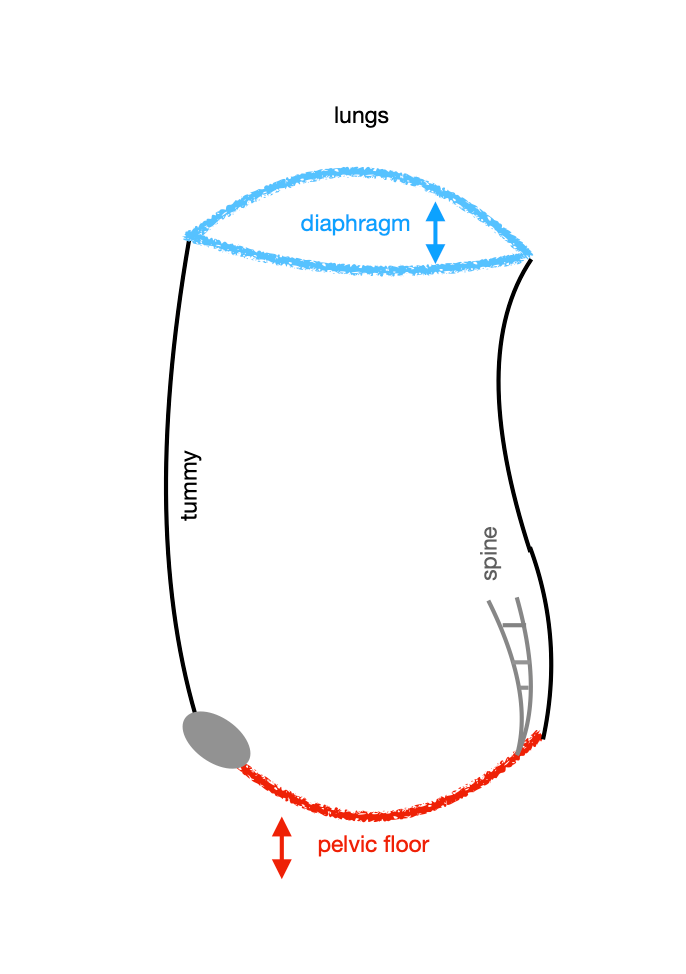
Lots of cool physiological processes happen when you breathe. When you slow your breath down and breathe through the nose, in particular, relaxation is promoted ((Jafari H, Courtois I, Van den Bergh O et al. Pain and Respiration: A Systematic Review. Pain. 2017. 158(6) 995-1006. Available at: https://journals.lww.com/pain/Abstract/2017/06000/Pain_and_respiration__a_systematic_review.2.aspx)). This happens as your body switches over to more parasympathetic nervous system activity. This ‘rest and digest’ activation leads to a drop in heart rate and blood pressure as well as a release of hormones, neuro transmitters and opioid like ‘drugs’ that provide natural pain relief.
This can be useful when dealing with pelvic girdle or back pain, labour pains and post-delivery soreness as well as aiding sleep.
Sit or lie comfortably and first spend a minute or two just noticing what parts of your body move when you breath. Do your shoulders elevate? Does your head move? Does your belly lift? What sounds do you hear? Do you breath in and out your nose or mouth or both?
 Next place one hand on your chest and the other on your belly. Keep breathing and notice if this has caused anything to change. There are no right or wrong ways. This is just to make you focus and be aware. This bit already can have effect on calming and slowing things down.
Next place one hand on your chest and the other on your belly. Keep breathing and notice if this has caused anything to change. There are no right or wrong ways. This is just to make you focus and be aware. This bit already can have effect on calming and slowing things down.
Next you will begin to direct the breath to fill the whole chest and the whole belly. Take the inhale as slow as possible. Avoid gripping or tensing your tummy. When you exhale through the nose (if possible) aim to make it long and slow – longer than the inhale if you can. Repeat these slow rhythmical breath cycles as long as necessary.
It can be challenging especially at first to keep your focus. Work with little amounts until you find it creates calmness or relief.
There is some evidence to suggest that relaxation techniques such as breath work, yoga, music and mindfulness may help pain management during the labour. So if you intend to use any of these techniques for the birth is can be useful to practice them at home when you are doing your perineal massage for example and in your intended labour positions. The brain and whole system makes associations and connections and responds then in a learned way (think Pavlov’s dog) so you get a similar reaction the next time even if the scenario is slightly different